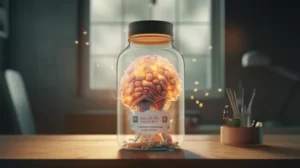Imagine walking into your local pharmacy and unknowingly purchasing a one-way ticket to the grave. It may sound like a bad movie plot, but the reality is that drug poisoning is far too common in the United States, with a reported increase of 300% since 1980. The majority of these cases can be attributed to prescription drugs, not to mention a significant portion come from legal painkillers. Surprisingly, prescription drug-related deaths today claim more lives than car crashes. But how did we reach this terrifying new normal?
Majority of Drug Overdose Deaths from Prescription Drugs
The American Journal of Preventive Medicine published a study that found around 90% of poisoning deaths result from illicit or licit drugs. It is important to note that prescription drugs account for a substantial majority of drug overdose deaths. This points to the fact that our prescription drugs might be doing more harm than good in many cases.
A study by the National Survey of Drug Use and Health reported that more than 2% of Americans, approximately 5 million people, use prescription painkillers recreationally. The number of hospitalizations due to poisoning by sedatives, tranquilizers, and opioids saw a shocking increase of two-thirds between 1999 and 2006.
According to Jeffrey H. Coben, M.D. of the West Virginia University School of Medicine, “it is essential that health care providers, pharmacists, insurance providers, state and federal agencies, and the general public all work together to address this crisis.” The truth is, prescription medications can be just as powerful and dangerous as notorious street drugs, and we need to ensure that people are aware of the risks and that treatment services are available to those with substance abuse problems.
The Dangers of Opioids and Other Painkillers
The rise in drug poisoning cases can be partly attributed to the abuse of prescription painkillers, particularly opioids. These painkillers effectively relieve pain, but they can also lead to addiction and potentially fatal consequences. Surprisingly, some users develop a dependency on these drugs even when they take them as prescribed by their doctor.
In recent years, there has been a growing concern about the risks associated with long-term use of opioids to treat chronic pain. This concern has been fueled by an increase in the number of people who turn to these prescription medications for short-term relief and end up with dangerous addiction problems that, if left untreated, could lead to hospitalization and even death.
The issue is further compounded by the fact that many opioid users also take other prescription medications, such as benzodiazepines, antidepressants, or anticonvulsants. When combined with opioids, these drugs can work together to create a dangerous cocktail that can lead to overdose and death.
A Need for Greater Awareness and Education
One critical aspect to combating the drug poisoning epidemic is awareness and education. Many individuals are simply unaware of the high risk of dependency and overdose that can result from using prescription painkillers. Some individuals mistakenly assume that because these drugs are prescribed by a doctor, they are entirely safe and void of any negative consequences.
Educating patients, as well as healthcare providers, about the dangers of prescription drug abuse and the potential risks associated with specific medications is crucial in reversing the trend. Doctors need to be more aware of the addictive qualities of opioids and other painkillers and should only prescribe them when absolutely necessary or explore alternative treatments.
Addressing the Crisis: Prevention and Treatment
The fight against prescription drug-related deaths and hospitalizations must include a multi-faceted approach to prevention and treatment. Steps to address the crisis can include:
- Encouraging physicians to prescribe painkillers judiciously: Doctors should carefully consider a patient’s risk factors for addiction before prescribing opioids or other potentially addictive drugs.
- Implementing prescription drug monitoring programs (PDMPs): States need to invest in PDMPs to help identify patients who abuse prescription painkillers and save lives.
- Expanding access to addiction treatment services: Providing comprehensive addiction treatment and recovery support services can help those struggling with substance abuse problems get the help they need.
- Raising public awareness about the dangers of prescription drugs: Through public health campaigns and social media outreach we can educate the general public about the risks associated with prescription drug abuse, and empower them to make informed decisions about their health.
By working together, healthcare providers, pharmacists, insurance providers, state and federal agencies, and the general public can make tremendous strides in reducing the number of deaths and hospitalizations caused by drug poisoning. It is essential that we address this crisis head-on and work towards a safer, healthier future for all.



